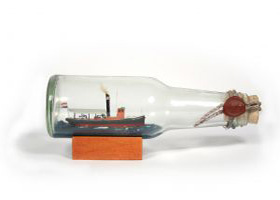


No, QE2 is quantitative easing, version 2.0. The first version pulled Japan out of its dreadful mess in the 1990s so successfully that … well, it is now launching a second version – bigger and better. Instead of buying government bonds, it may also buy commercial paper and corporate bonds – all to push inflation into somewhat significant digits. That goes along with a policy that is officially now ZIRP – zero interest rate, with the inflation band lowered from 10 basis points to 0 to 10 bps. With Japanese bond investors earning zip, that might encourage them to borrow or spend more than zilch.
Japanese companies certainly are. But not to invest in the domestic economy. Instead, it’s to buy foreign companies.
Some U.S. pundits hope for a made-in-America QE2 (though the latest aircraft carrier being built is actually the USS Gerald R. Ford) as a last effort before launching the helicopters to simply drop money – the secret weapon Milton Friedman once proposed and Ben Bernanke once endorsed.
But U.S. companies apparently have no need for helicopters. Like their Japanese counterparts, they are hoarding cash, and even going a little bit further, issuing bonds at cheap rates to build war chests.
So much for sounding the alarm of inflation. Charles Evans, president of the Federal Reserve Bank of Chicago, has argued in the Wall Street Journal that
“With the funds rate already at zero, there is a pretty valid question as to how accommodative is monetary policy. Some people would point to the size of our balance sheet and say there is an enormous amount of accommodation. Just look at the amount of excess reserves in the system. Milton Friedman looked at the U.S. economy in the 1930s and he saw low interest rates as inadequate accommodation, that there should have been more money creation at that time to support the economy. … I’ve come to the conclusion that conditions continue to be restrictive even though we have a lot of so called accommodation in place. An improvement would be a dramatic increase in bank lending. That would be associated with broader monetary aggregate increases. Then we would begin to see more growth and more inflationary pressures and then that would be a time to be responding. … The unemployment rate is too high; inflation is lower than what I think price stability is. I would clearly favor more accommodation. If we were to do more large scale asset purchases, namely Treasurys, that would have a beneficial effect. There would be some reduction in long-term yields. That would be of some help. But given the nature of the outlook, much more accommodation than that is probably what’s called for. We have to think a little more carefully about the potential tools that we have available to us.”
But deflation expectations, once anchored, may be just as powerful as inflation expectations. So quantitative easing, like the ocean-going QE2s, may take a long time to execute a turn.
